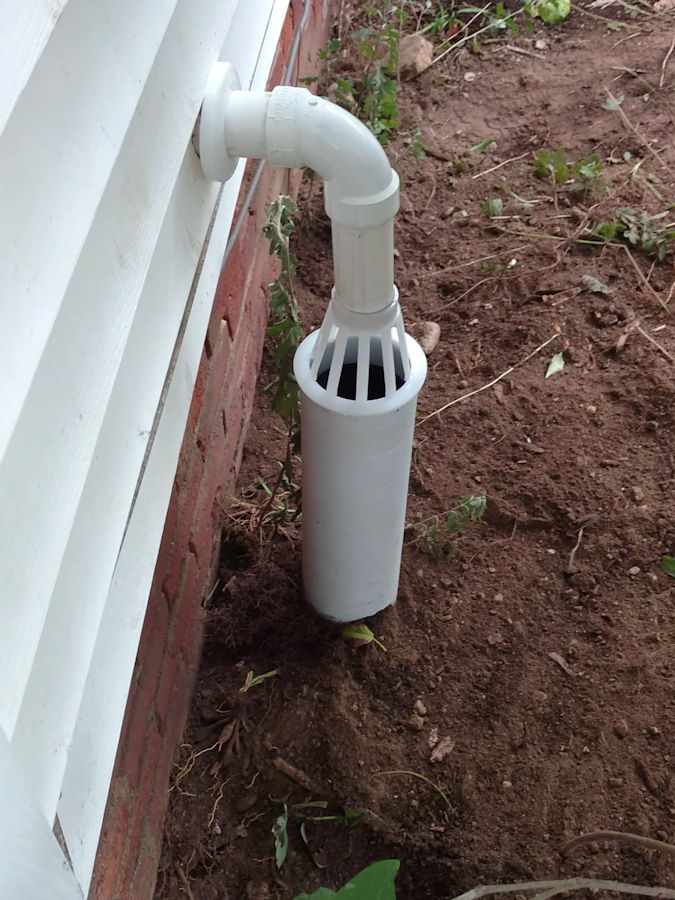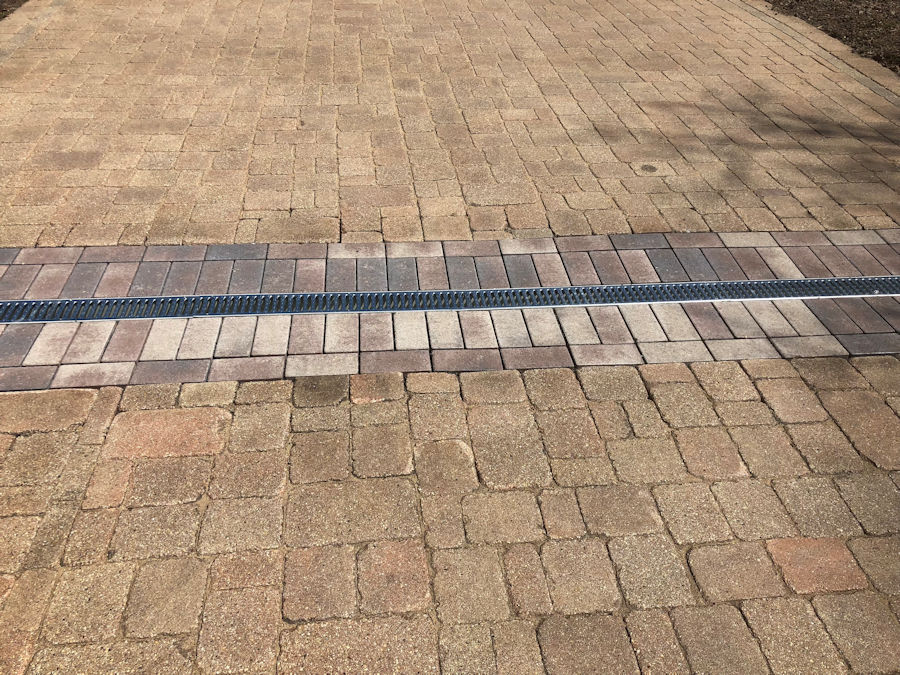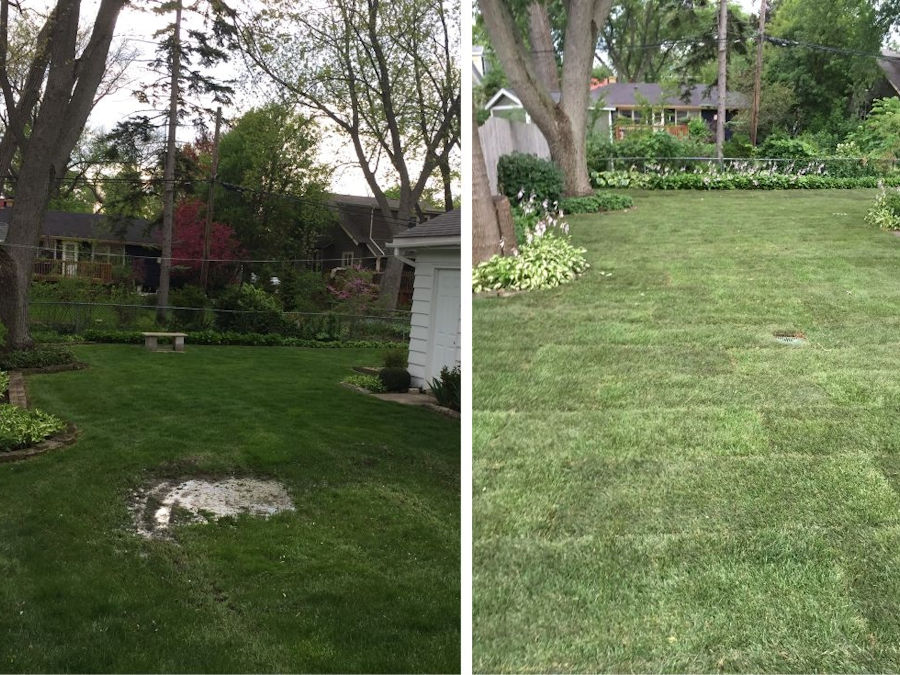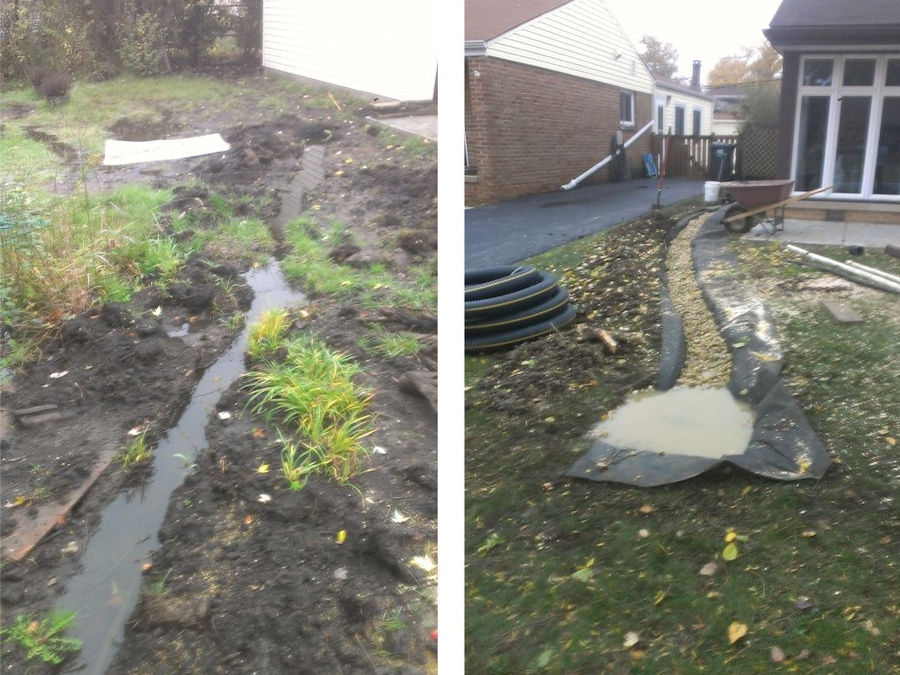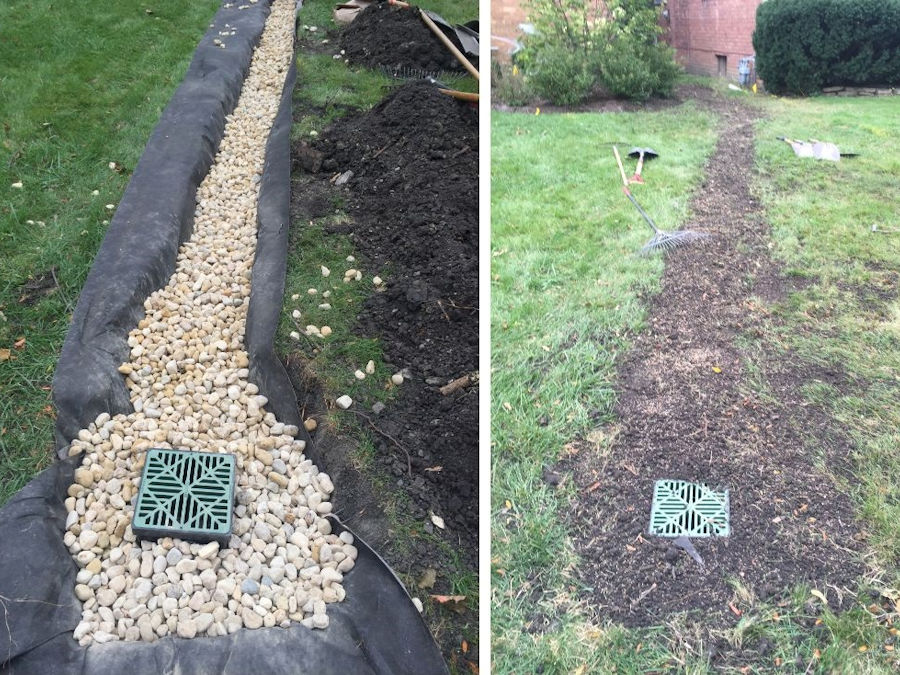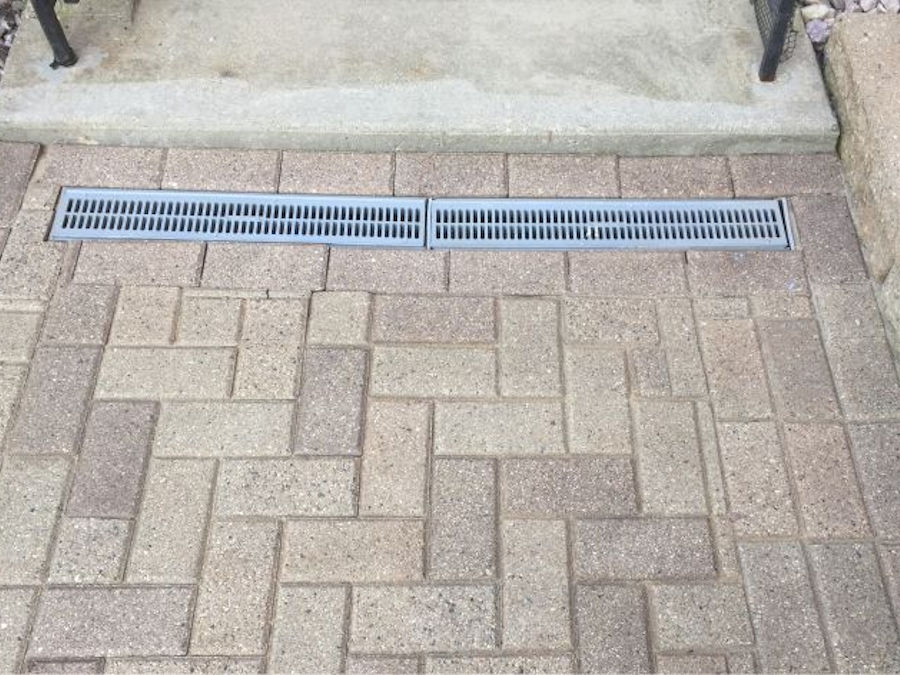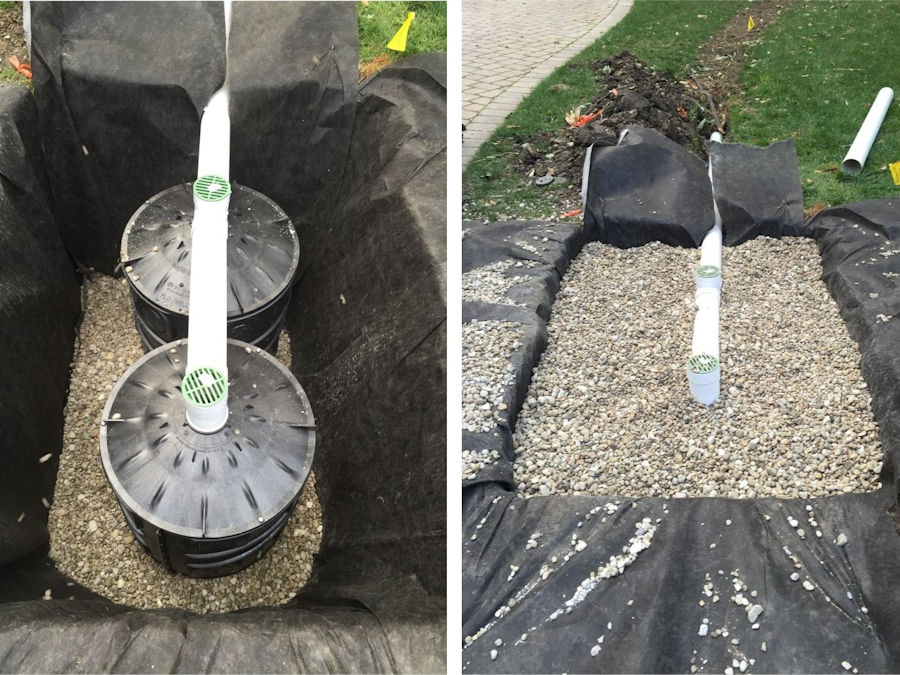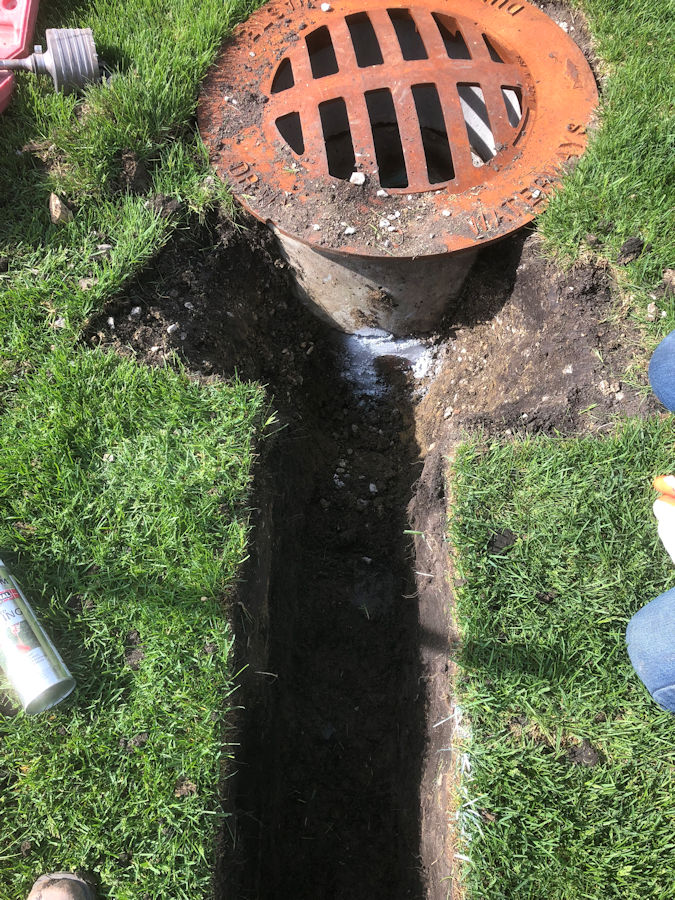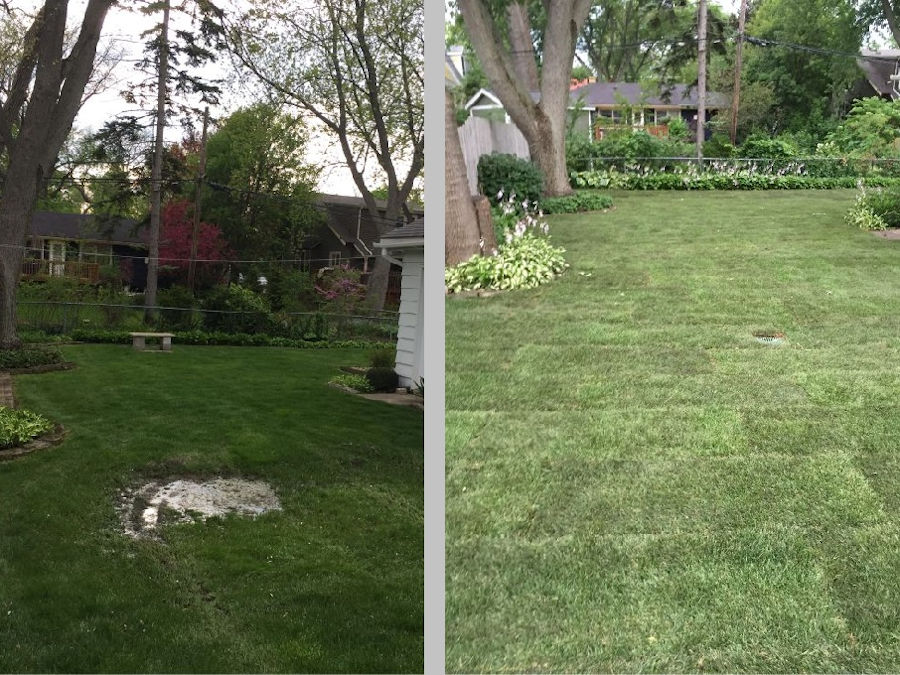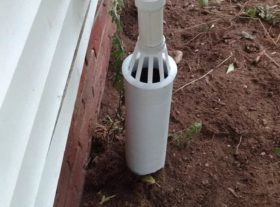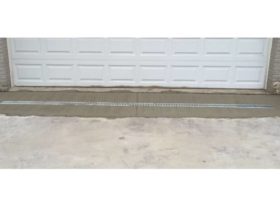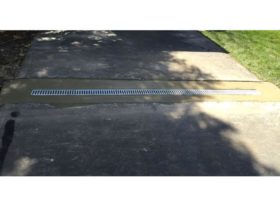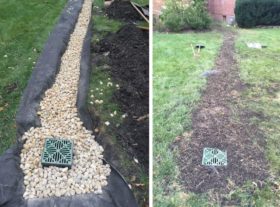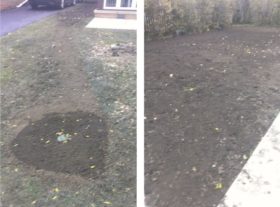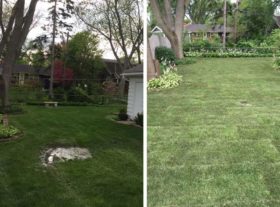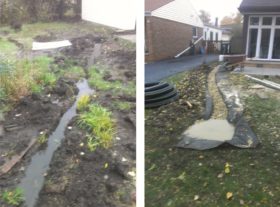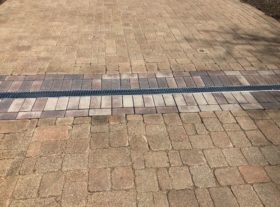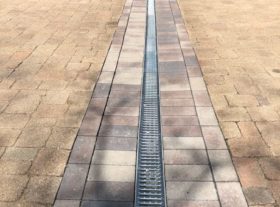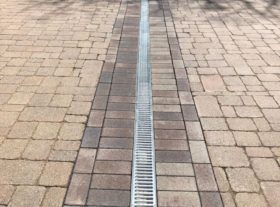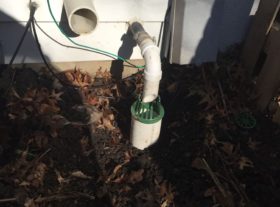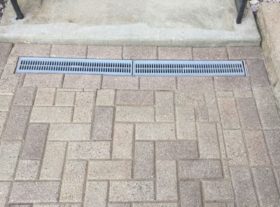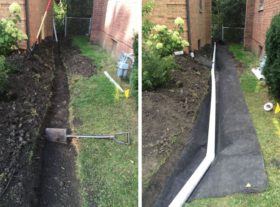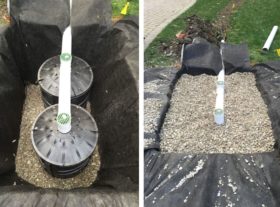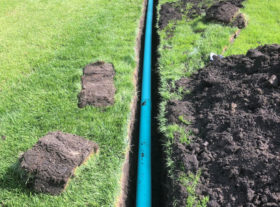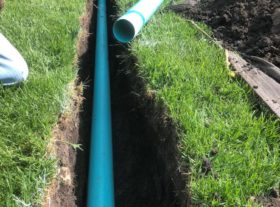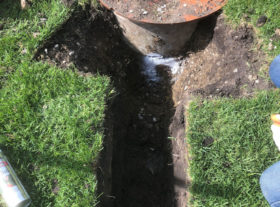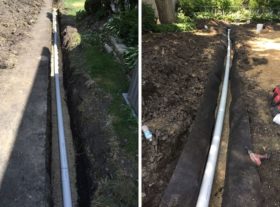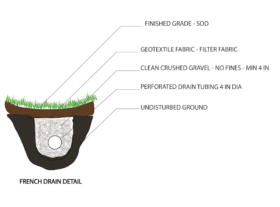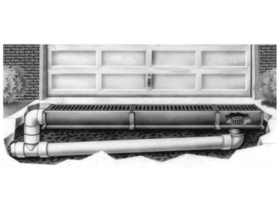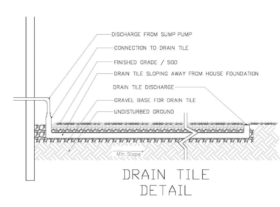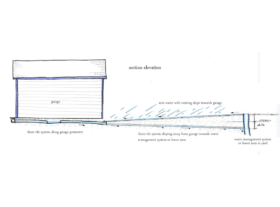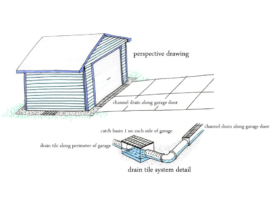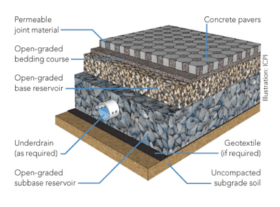Yard Drainage Service
Typical problems of drainage issues include: sitting water in low spots of the yard, sitting water against foundation walls or window wells, and bad sump pump discharge lines.
The sitting water is not only unsightly, but can also be a walking hazard in your yard or a source that collects microbes and insects. It definitely makes grass and other surrounding landscape difficult to maintain.
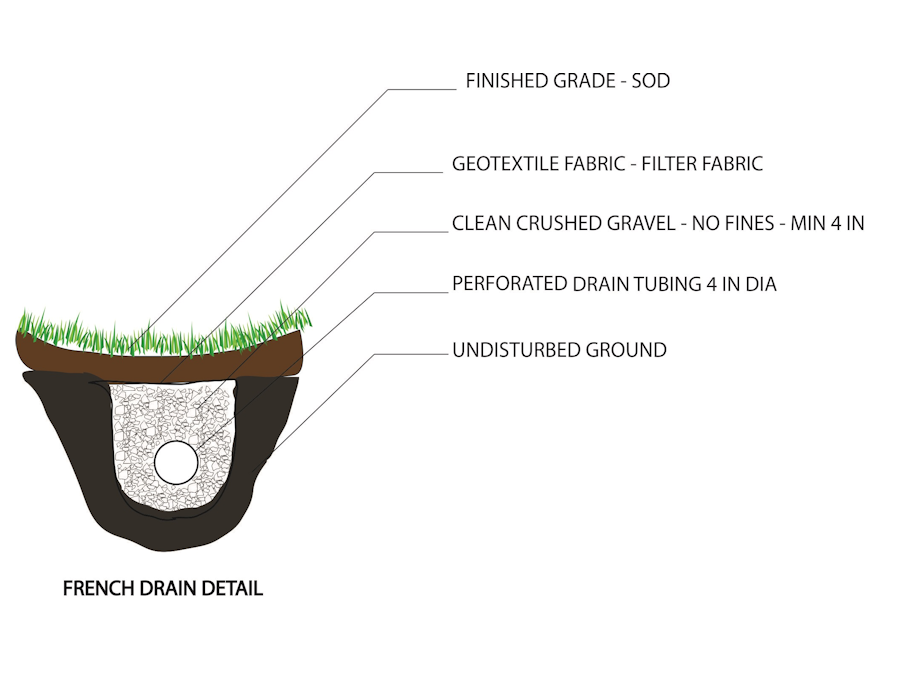 Yard Drainage Solutions
Yard Drainage Solutions
Among the best and most affordable drainage solutions are the following:
- French Drain (also known as trench drain)
- Sump pump discharge installation
- Re-grading an area of the yard.
- Flow wells, dry wells or dry creeks
Yard Drainage Solutions Explained
This technique consists of a trench, typically 12 to 24 inches deep, starting at the point where the water collects and ending at a discharge point. Because this system relies on gravity to work, the discharge point must be lower than the initial point. Minimum slope is 1% of the total distance.In other words, if the total length to be trenched is 100 feet long, the endpoint must be at least 1 foot lower than the initial point. The discharge point can be a lower area within the property where water can run on the surface by its own, a flow well, dry well or dry creek, or a city storm drain near the property.
Once the trench is dug up and the slopes are verified a geotextile liner is installed to serve as a filter between the dirt and the gravel. This prevents any dirt or loose debris from entering and potentially clogging the system. A gravel bedding is installed at the bottom of the trench, followed by the actual pipe. This pipe can be corrugated flexible pipe or PVC sewer pipe. It must be perforated to allow water to infiltrate. The trench is then filled with clean gravel. Th gravel is covered with the geotextile and topped with 2 to 4 inches of topsoil to receive grass seed or sod.
A very common problem occurs when the sump pump ejects water near the foundation wall of the house, which finds its way back into the basement, basically forming a never-ending cycle. The proper approach is installing an underground discharge pipe that will direct the water away from the foundation wall of the house. The discharge point can be a lower area within the property where water can run on the surface by its own, a flow well, dry well or dry creek, or a city storm drain near the property. The trench is typically 12 to 18 inches deep with a minimum slope of 1 % of the run. The most common pipe used for this application is solid PVC sewer pipe.
Re-grading an area of the yard: Re-grading is also a very effective way to approach a drainage problem. In situations where the solution is to re-grade, the most common practice is to remove any existing vegetation, till the ground and add fresh topsoil to achieve the newly desired slopes.
Other ways to approach a drainage problem are installing flow wells, dry wells or dry creeks
Yard Drainage Pics
(click the images to see full detail)
